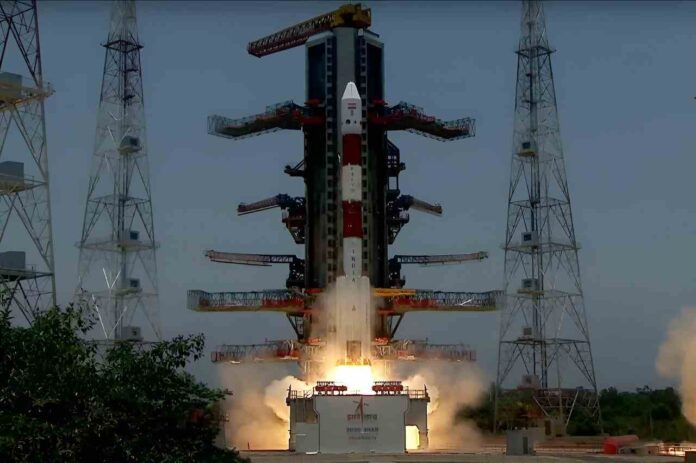A week after India’s successful unmanned lunar landing, the country’s latest mission in its ambitious space programme blasted off on a trek towards the centre of the solar system on Saturday.
Live footage from the lunchtime liftoff of the Aditya-L1 showed hundreds of people celebrating wildly despite the deafening boom of the rocket’s ascension.
An Indian Space Research Organisation representative reported from mission control, “Launch successful, all normal,” as the spacecraft entered Earth’s stratosphere.
During its four-month voyage, the mission will use scientific instruments to study the sun’s outer layers.
Since NASA’s Pioneer programme in the 1960s, both the United States and the European Space Agency (ESA) have dispatched many probes to the solar system’s core.
Both Japan and China have sent spacecraft equipped with solar observatories to orbit the planet.
If the current mission from India’s Space Research Organisation (ISRO) is successful, it will be the first spacecraft from Asia to enter solar orbit.
NDTV quoted astronomer Somak Raychaudhury, who said, “It’s a challenging mission for India,” on Friday.
Coronal mass ejections are periodic phenomena characterised by massive discharges of plasma and magnetic energy from the sun’s atmosphere, and according to Raychaudhury, the mission probe will investigate these events.
Powerful enough to reach Earth, these bursts may interfere with satellite operations.
Aditya will contribute with the prediction of the event “and alert everybody so that satellites can shut down their power,” he said.
As an added bonus, “it will also help us understand how these things happen, and in the future, we might not need a warning system out there.”
Aditya, named after the Hindu sun god, will travel a total of 1.5 million kilometres (930,000 miles) to get there, which is still less than 1% of the way to the sun.
When this happens, the spacecraft is able to maintain a stable halo orbit around our nearest star because the gravitational forces of both celestial bodies are cancelled out.
The 320-ton PSLV XL rocket on which Aditya rides has been a reliable component of India’s space programme, fueling previous moon and Mars missions.
By viewing and measuring particles in the sun’s upper atmosphere, the mission hopes to give light on the dynamics of several other solar phenomena.
At a fraction of the cost of other leading space nations, India has been steadily catching up.
The South Asian country has a very modest space programme, but it has gained considerable scale and speed since it launched its first probe into lunar orbit in 2008.
According to experts, India is able to keep prices low because of its quantity of highly qualified engineers who earn a fraction of the salary of their global counterparts and its willingness to replicate and adapt current technologies.
The successful lunar landing last month, which had previously been accomplished only by Russia, the United States, and China, incurred expenses of less than $75 million.
People all over the world cheered the landing, with some even praying for the mission’s success and others watching live broadcasts of the descent in their classrooms.
India launched a spacecraft into Mars orbit in 2014, making it the first Asian country to do so. In the coming year, the country plans to launch a crewed mission into Earth orbit for a duration of three days.
It also wants to send an orbiter to Venus within the next two years and a probe to the moon by 2025 with Japan.
Source: AFP
